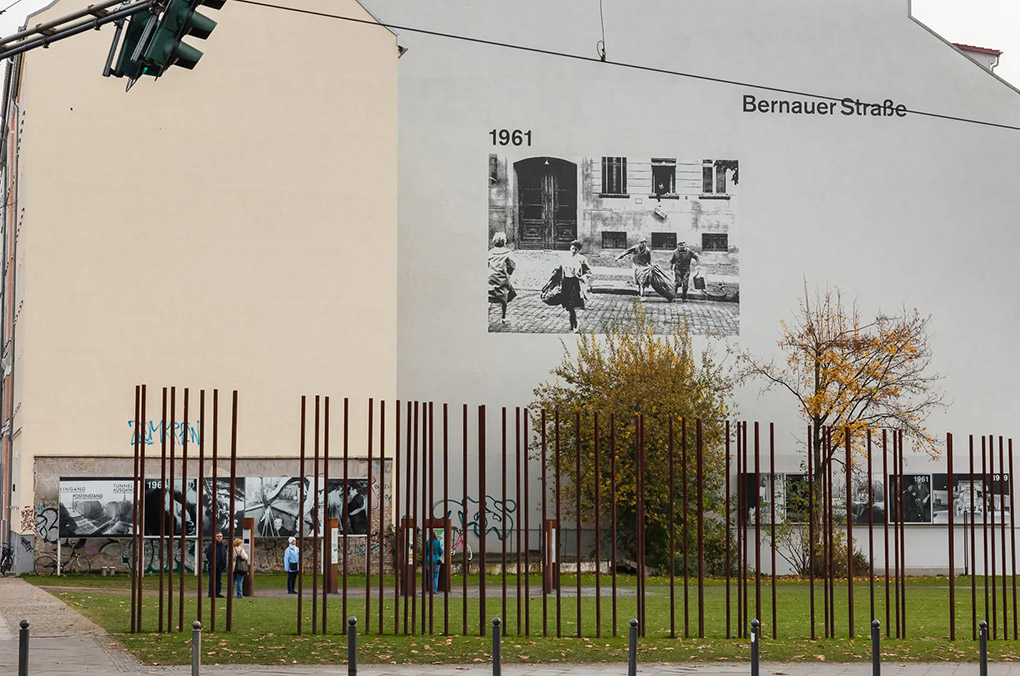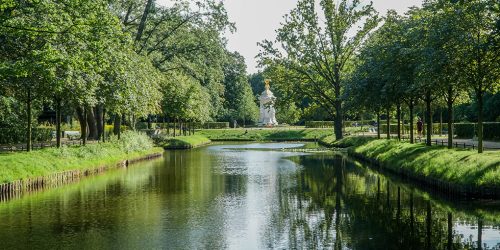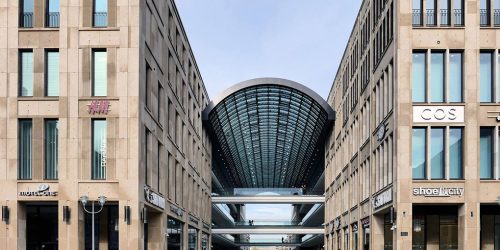Berlin History and Culture Tour: Must-Visit Museums and Monuments
Berlin is a city that breathes history and exudes culture at every corner. The city’s rich past and vibrant culture are encapsulated in its museums and monuments, which stand as testaments to its complex and fascinating history. I’ll share my experiences at four of Berlin’s must-visit museums, each offering a unique glimpse into different aspects of the city’s heritage. Alongside detailed insights into my favorite and recommended works, I’ll also provide practical information on locations, routes, services, and tips for making the most of your visit.
1. Pergamon Museum
Location: Bodestraße 1-3, 10178 Berlin
The Pergamon Museum, located on the Museum Island, is one of Berlin’s most visited museums and with good reason. It houses monumental structures from ancient civilizations, reconstructed to awe-inspiring perfection.
Personal Experience:
Walking into the Pergamon Museum feels like stepping into an ancient world, where history comes alive through its grandiose displays. The sense of scale and detail in the reconstructions is overwhelming, making it one of my favorite museums in Berlin.
My Favorite Works:
The Pergamon Altar:
- Description: This colossal altar from the ancient city of Pergamon (modern-day Turkey) dates back to the 2nd century BC. The frieze depicting the battle between the gods and giants is a masterpiece of Hellenistic art.
- Personal Insight: The sheer size and intricate detail of the altar left me breathless. Standing before it, I felt a deep connection to the ancient world, as if I could almost hear the echoes of the past battles and see the gods in motion.
Ishtar Gate:
- Description: The Ishtar Gate is one of the eight gates of the inner city of Babylon and was constructed in 575 BC. The vibrant blue glazed bricks and reliefs of dragons and bulls are truly mesmerizing.
- Personal Insight: The vibrant colors and mythical creatures of the Ishtar Gate transported me back to the grandeur of ancient Babylon. It’s hard to fathom how such an intricate and monumental structure could be transported and reconstructed so meticulously.
Market Gate of Miletus:
- Description: This grand gate was originally built in the 2nd century AD in the ancient city of Miletus. It stands as a testament to Roman architecture with its impressive columns and detailed sculptures.
- Personal Insight: The Market Gate’s majestic presence gave me a sense of the architectural prowess of the Romans. Its detailed carvings and towering columns are a reminder of the opulence and sophistication of ancient cities.
Recommended Works:
Mshatta Facade:
- Description: The facade is a part of the Qasr Mshatta, an unfinished Islamic desert palace from the Umayyad period. Its intricate carvings showcase early Islamic art.
- Reason to Visit: The facade’s detailed stucco work offers a glimpse into the art and architecture of early Islamic civilization, making it a fascinating study for art historians and enthusiasts alike.
Aleppo Room:
- Description: This richly decorated room comes from a house in Aleppo, Syria, and dates back to the 17th century. It features exquisite woodwork and painted panels.
- Reason to Visit: The Aleppo Room’s vibrant colors and intricate patterns provide a stark contrast to the monumental stone structures in the rest of the museum, highlighting the diversity of ancient artistic traditions.
Assyrian Wall Reliefs:
- Description: These reliefs depict scenes of Assyrian kings, gods, and mythical creatures, offering insights into the life and beliefs of ancient Assyria.
- Reason to Visit: The reliefs are a window into the daily life and mythology of the Assyrian Empire, showcasing the artistry and narrative skill of its craftsmen.
Practical Information:
- Open Hours: Daily from 10:00 AM to 6:00 PM (Thursdays until 8:00 PM).
- Admission: €12 for adults; reduced price of €6 for students. Children under 18 are free.
- Discounts and Booking: Tickets can be booked online through the museum’s official website to avoid long queues. Combined tickets for all Museum Island museums are available for €19, offering excellent value.
- Route: The museum is easily accessible via public transport. Take the S-Bahn to Hackescher Markt or the U-Bahn to Museumsinsel (U5).
2. Neues Museum
Location: Bodestraße 1-3, 10178 Berlin
Adjacent to the Pergamon Museum on Museum Island, the Neues Museum is renowned for its extensive collection of Egyptian and prehistoric artifacts.
Personal Experience:
The Neues Museum is a journey through time, from ancient Egypt to early European history. Its carefully curated exhibits and atmospheric rooms make for an immersive experience.
My Favorite Works (continued):
Nefertiti Bust:
- Description: This iconic bust of Queen Nefertiti, dating back to around 1345 BC, is one of the most famous works of ancient Egyptian art. It’s renowned for its exquisite craftsmanship and the queen’s serene and regal expression.
- Personal Insight: Standing in front of the Nefertiti bust was a surreal experience. The bust’s flawless beauty and historical significance make it a powerful reminder of ancient Egypt’s grandeur and sophistication. It’s incredible to think that something so delicate has survived thousands of years.
Berlin Green Head:
- Description: This enigmatic sculpture of a man’s head, made of green schist and dating to the 4th century BC, showcases the detailed realism characteristic of ancient Greek art.
- Personal Insight: The Berlin Green Head’s lifelike features and expressive eyes convey a deep sense of individuality. It’s a striking piece that invites contemplation about the person it once represented and the artist who crafted it.
Golden Hat of Berlin:
- Description: This remarkable Bronze Age artifact, dating to between 1000 and 800 BC, is a long, conical hat made of thin gold leaf, intricately decorated with astronomical symbols.
- Personal Insight: The Golden Hat’s intricate designs and historical mystery captivated me. It’s fascinating to consider its potential use in ancient rituals or as a ceremonial object, reflecting the advanced astronomical knowledge of the time.
Recommended Works:
Egyptian Book of the Dead:
- Description: This collection of ancient Egyptian funerary texts contains spells and instructions for the deceased to navigate the afterlife. The museum’s collection includes beautifully illustrated papyrus scrolls.
- Reason to Visit: The Egyptian Book of the Dead provides invaluable insights into the spiritual beliefs and practices of ancient Egypt, making it a must-see for anyone interested in ancient religions.
Priam’s Treasure:
- Description: This collection of gold and other artifacts was discovered by Heinrich Schliemann at the site of ancient Troy, dating back to the Bronze Age. It includes a stunning array of jewelry and ceremonial objects.
- Reason to Visit: Priam’s Treasure connects visitors with the legendary city of Troy and the epic tales of the Trojan War, offering a tangible link to Homeric legend.
Neanderthal Skull:
- Description: This well-preserved Neanderthal skull provides critical evidence about our ancient human relatives, dating back over 40,000 years.
- Reason to Visit: The Neanderthal skull is an important piece of human history, shedding light on our evolutionary past and the development of early humans.
Practical Information:
- Open Hours: Daily from 10:00 AM to 6:00 PM (Thursdays until 8:00 PM).
- Admission: €12 for adults; reduced price of €6 for students. Children under 18 are free.
- Discounts and Booking: Tickets can be booked online through the museum’s official website. Combined tickets for Museum Island are also available.
- Route: The museum is accessible via the same routes as the Pergamon Museum. Take the S-Bahn to Hackescher Markt or the U-Bahn to Museumsinsel (U5).

3. Jewish Museum Berlin
Location: Lindenstraße 9-14, 10969 Berlin
The Jewish Museum Berlin offers a poignant and comprehensive look at Jewish history and culture in Germany, housed in a striking building designed by Daniel Libeskind.
Personal Experience:
Visiting the Jewish Museum Berlin was an emotionally intense experience. The museum’s innovative architecture and deeply moving exhibits left a lasting impact on me, providing profound insights into Jewish history, culture, and the Holocaust.
My Favorite Works:
The Garden of Exile:
- Description: This outdoor installation consists of 49 tall concrete stelae, with olive willows growing out of the top, creating a disorienting environment meant to evoke the feelings of dislocation and loss experienced by Jewish exiles.
- Personal Insight: Walking through the Garden of Exile was a disorienting and emotional experience. The tilted ground and towering columns evoke a sense of instability, mirroring the confusion and displacement faced by those forced into exile.
Fallen Leaves:
- Description: This installation by Israeli artist Menashe Kadishman features over 10,000 metal faces scattered across the floor of the museum’s Memory Void, representing the innocent victims of war and violence.
- Personal Insight: The sound of metal crunching underfoot as I walked over the Fallen Leaves was haunting. Each face is a powerful reminder of the countless lives lost to senseless violence, creating a visceral and unforgettable experience.
Shalekhet (Fallen Leaves):
- Description: Another installation by Kadishman, this piece invites visitors to walk on over 10,000 open-mouthed faces cut from heavy, circular iron plates, spread across the floor of the Memory Void.
- Personal Insight: Walking on the iron faces was deeply unsettling. The experience is designed to make visitors reflect on the magnitude of human loss, and it succeeded in making me feel the weight of history.
Recommended Works:
The Axis of Holocaust:
- Description: One of the three axes in the museum’s basement, it leads to the Holocaust Tower, a tall, dark, empty concrete void that symbolizes the feeling of imprisonment and hopelessness experienced by Holocaust victims.
- Reason to Visit: The Axis of Holocaust and the Holocaust Tower are incredibly powerful, evoking the fear and despair felt by those persecuted during the Holocaust.
The E.T.A. Hoffmann Library:
- Description: This exhibit recreates the personal library of the famous Jewish writer E.T.A. Hoffmann, showcasing his contributions to literature and his impact on Jewish and German culture.
- Reason to Visit: Hoffmann’s library provides a cultural and intellectual context to Jewish life in Germany, highlighting the significant contributions of Jewish individuals to broader cultural movements.
Memory Void:
- Description: This void, one of several in the museum, is an empty, unheated space meant to evoke the absence and loss felt after the Holocaust.
- Reason to Visit: The Memory Void is a stark reminder of the void left by the millions of lives lost during the Holocaust, serving as a space for reflection and remembrance.
Practical Information:
- Open Hours: Daily from 10:00 AM to 8:00 PM (Mondays until 10:00 PM).
- Admission: €8 for adults; reduced price of €3 for students. Children under 6 are free.
- Discounts and Booking: Tickets can be booked online through the museum’s official website. Combined tickets for temporary exhibitions are also available.
- Route: The museum is easily accessible via U-Bahn (U6) to Hallesches Tor or via bus lines M29 and 248.
4. Berlin Wall Memorial
Location: Bernauer Str. 111, 13355 Berlin
The Berlin Wall Memorial is a poignant reminder of the city’s divided past. Stretching along Bernauer Straße, it includes the last piece of the Berlin Wall with preserved grounds, a documentation center, and a chapel.
Personal Experience:
The Berlin Wall Memorial offers a deeply moving experience, capturing the human stories behind the wall’s history. Walking along the remnants of the wall and seeing the preserved death strip was a stark reminder of the city’s not-so-distant past.
My Favorite Works:
Documentation Center:
- Description: The center provides an in-depth look at the history of the Berlin Wall, featuring photographs, videos, and personal stories from those who lived through the division.
- Personal Insight: The personal stories and video testimonies in the Documentation Center brought the history of the Berlin Wall to life. They provided a human face to the political narrative, making the past feel immediate and real.
Window of Remembrance:
- Description: This memorial honors the victims who lost their lives attempting to cross the Berlin Wall. Each individual’s story is displayed, offering a sobering reminder of the wall’s human cost.
- Personal Insight: The Window of Remembrance was incredibly moving. Each face and story is a poignant reminder of the individual tragedies caused by the division, highlighting the human impact of political decisions.
Chapel of Reconciliation:
- Description: Built on the site of the former Church of Reconciliation, which was destroyed to make way for the wall, this chapel serves as a place of peace and reflection.
- Personal Insight: The Chapel of Reconciliation offers a peaceful counterpoint to the harsh reality of the wall. It’s a place to reflect on reconciliation and the healing process following the wall’s fall.

Recommended Works:
Original Wall Section:
- Description: This preserved section of the Berlin Wall includes the death strip, watchtowers, and barriers, providing a stark visual representation of the city’s division.
- Reason to Visit: The original wall section allows visitors to see firsthand the physical barriers that once divided Berlin, offering a tangible connection to history.
Escapes and Escapers Exhibit:
- Description: This exhibit details the various escape attempts over the wall, highlighting the ingenuity and bravery of those who sought freedom.
- Reason to Visit: The stories of escape attempts are both harrowing and inspiring, showcasing the lengths to which people would go to seek freedom.
Bernauer Strasse Tunnel:
- Description: This replica tunnel illustrates the daring underground escape attempts made by East Berliners seeking to reach the West.
- Reason to Visit: The tunnel exhibit provides a fascinating look at the resourcefulness and determination of those who sought to escape, emphasizing the human spirit’s resilience.
Practical Information:
- Open Hours: Daily from 8:00 AM to 10:00 PM.
- Admission: Free entry.
- Route: Accessible via U-Bahn (U8) to Bernauer Straße or tram M10.
Berlin’s museums and monuments offer a deep dive into the city’s rich and complex history. From the ancient relics of the Pergamon Museum to the poignant memorials of the Berlin Wall, each site provides a unique perspective on the past. My journey through these museums was not only educational but also deeply moving, offering insights that will stay with me forever. For anyone looking to explore Berlin’s history and culture, these museums and monuments are unmissable stops that provide both profound learning and personal reflection.







